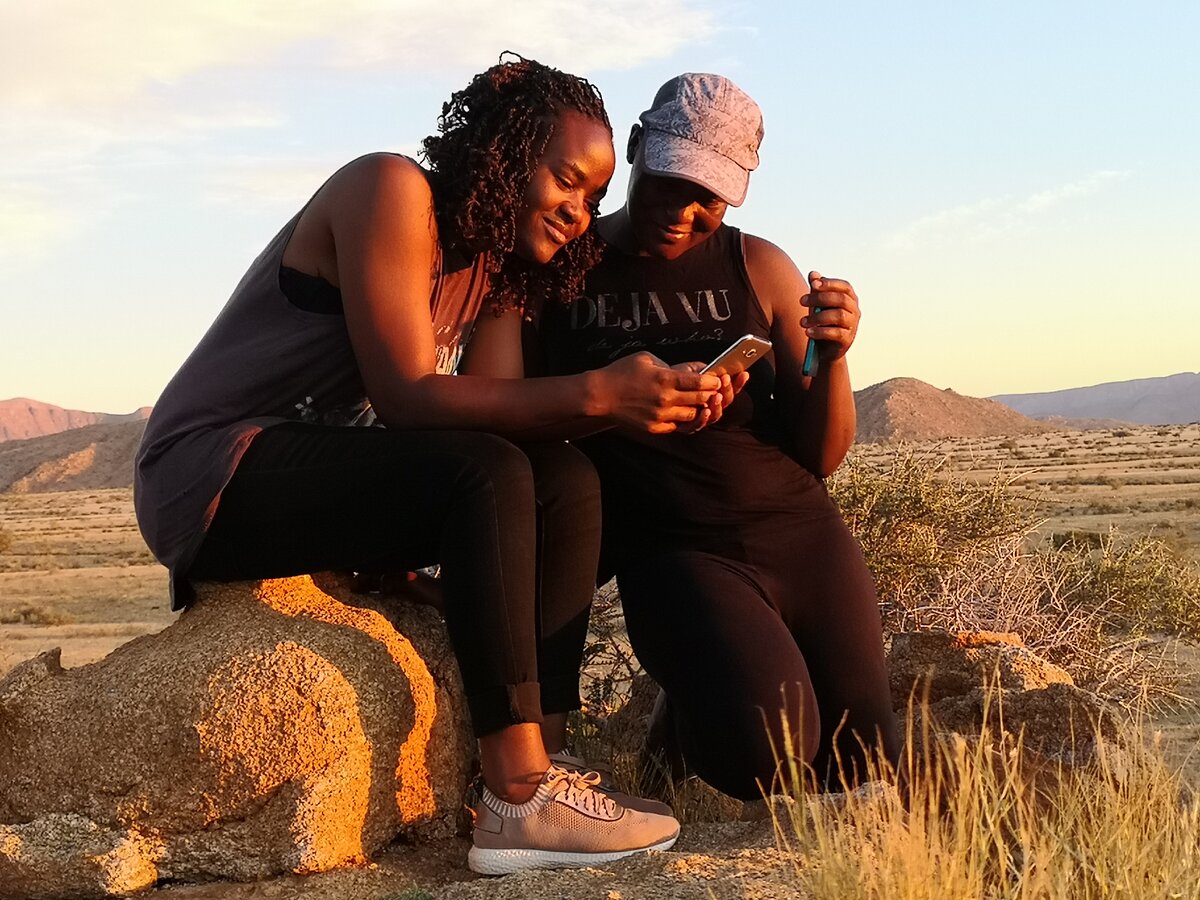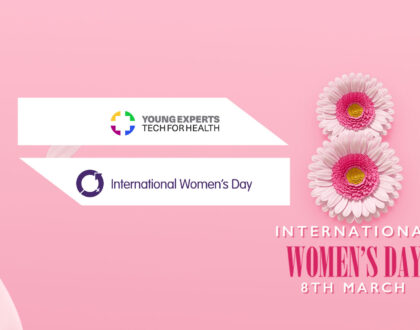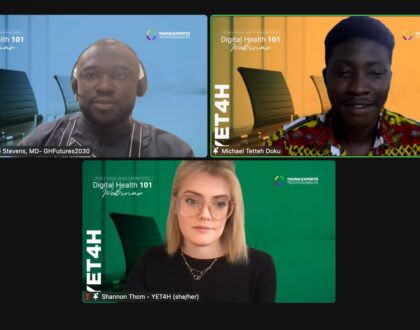How can we leave behind tokenistic approaches of engagement to make way for meaningful ones?

In an era defined by digital transformation, young people’s role as digital natives in leading and co-designing this progress can’t be overlooked. Seen as early adopters of innovation, many digital health solutions target young people as beneficiaries, seeking to improve our access to crucial health information and services. However, more often than not these solutions fail to address one issue that should lay the foundation for every single aspect of the solution: how can we make sure young people are meaningfully engaged throughout the process?
Today’s adolescents and young people, representing a quarter of the world’s population (UNFPA, 2019). It is the most connected generation the world has ever known. Having been front and center in the digital revolution since a young age, we understand the power of technology to transform lives. We know and believe that digital transformation can support the achievement of health equity—to ensure care, well-being and empowerment for everyone everywhere. If recent data showing increasing interest in utilizing digital platforms for health objectives is any indication (WHO, 2019), we know that we’re not alone in this.
But at the same time, we know that equity in results can’t be achieved without equity in process. Indeed previous reports and studies (WHO, 2020; Dowshen et al., 2015; Norman & Yip, 2012) have highlighted the importance of co-designing interventions along with young people, in order to not only maximize impact and effectiveness, but also to amplify our voices, and to provide us with opportunities to exercise our agency and rightfully shape solutions that will affect our lives.
We believe that digital health solutions must be built not just for, but with young people. In the following section, you’ll find a few general principles to uphold as we move towards a world where meaningful youth engagement is no longer the exception, but rather the norm.

Principle #1: Ensure sustained, leading role of young people from design to evaluation
Meaningfully engaging youth can’t just be a one-time occasion. Young people aren’t just implementers—we are co-designers and co-evaluators, and our expertise will be valuable and crucial no matter what stage the project is in. Furthermore, it needs to be noted that leading means that we have a say and can influence decision-making, instead of just acting as passive participants.
Principle #2: Recognize that it’s not an issue of lack of capacity, but lack of opportunity
We’ve seen a lot of pushback regarding young people leading and making decisions that primarily centers on young people not being capable enough. But we know that more often than not, it isn’t an issue of lack of capacity, but rather opportunity. It’s not that young people aren’t capable, it’s just that we haven’t had the opportunity to grow. When young people are given the opportunity, training, and mentorship to build our skills, we can grow our expertise and contribute to solutions in meaningful ways.
“There should be nothing, no program or intervention, be it digital or not, that is for us, that is designed without us. We simply can’t ever achieve health equity in this digital age without ensuring that diverse young voices are leading every step of the way—and not just as a tokenistic afterthought.”
Principle #3: Ensure organization staff understand and is committed to meaningful youth engagement principles
Providing all staff—not just the Youth Engagement Officers—capacity building on how to meaningfully engage youth, and making sure that they are committed to upholding these principles, creates an enabling and safe environment for young people to be engaged, no matter who they work with in the organization. Youth engagement should be mainstreamed across units and departments.
Principle #4: Have mechanisms to safeguard young people’s rights and well-being, including digital
Youth engagement processes also pose risks for young people—and particularly in this increasingly digital world, young people are exposed to a variety of risks when engaging online. Data security as well as exposure to online violence and harmful content are just two among many other risks that should be taken into consideration. Organizations need to have mechanisms to minimize this risk, safeguard young people and provide appropriate solutions for when these risks actually happen. One example would be to provide digital literacy and well-being training and resources to youth advocates.
“Ageism is something young people face daily, and this issue becomes even more crucial when it’s young people from the Global South, young people from indigenous communities, young people with disabilities, LGBTQIA+, and other groups with histories and current realities of oppression, exploitation, and violence.”
Principle #5: Know that young people aren’t mere resources that can be tapped into without compensation
We routinely compensate experts and consultants for their work and time; why shouldn’t it be the same for young people, who also devote their much-needed expertise and limited time? In addition to that, from an equity perspective, when we expect young people to be engaged for free, we limit the opportunity to only those who have free time and are in a privileged position to work for free.
Principle #6: Be aware of privilege and power dynamics
When it comes to engaging with young people, it’s crucial to recognize that there are privilege and power dynamics aspects at play. Ageism is something young people face daily, and this issue becomes even more crucial when it’s young people from the Global South, young people from indigenous communities, young people with disabilities, LGBTQIA+, and other groups with histories and current realities of oppression, exploitation, and violence. As is the case with other forms of bias and discrimination, the manifestations of these power dynamics might not be conscious and explicit, but rather unconscious and implicit. However, meaningfully engaging young people means that we need to be aware and critical of this from the start, and actively fight against it.
With these principles in mind, I’d like to conclude by reiterating that there should be nothing, no program or intervention, be it digital or not, that is for us, that is designed without us. We simply can’t ever achieve health equity in this digital age without ensuring that diverse young voices are leading every step of the way—and not just as a tokenistic afterthought.
References:
- Dowshen, N., Lee, S., Lehman, B. M., Castillo, M., & Mollen, C. (2015). IknowUshould2: feasibility of a youth-driven social media campaign to promote STI and HIV testing among adolescents in Philadelphia. AIDS and Behavior, 19(2), 106-111. https://www.ncbi.nlm.nih.gov/pmc/articles/PMC44950…
- Norman, C. D., & Yip, A. L. (2012). eHealth promotion and social innovation with youth: using social and visual media to engage diverse communities. Studies in health technology and informatics, 172, 54-70. https://pubmed.ncbi.nlm.nih.gov/22910502/
- UNFPA. (2019). My Body, My Life, My World, Rights and choices for all adolescents and youth: a UNFPA global strategy. New York: UNFPA. https://www.unfpa.org/youthstrategy
- World Health Organization. (2019). WHO guideline: recommendations on digital health interventions for health system strengthening. Geneva: WHO. https://www.who.int/reproductivehealth/publication…
- World Health Organization. (2020). Youth-centred digital health interventions: A framework for planning, developing and implementing solutions with and for young people. Geneva: WHO. https://www.who.int/publications/i/item/9789240011…
Recommended Posts

YET4H marks International Women’s day
March 29, 2023


